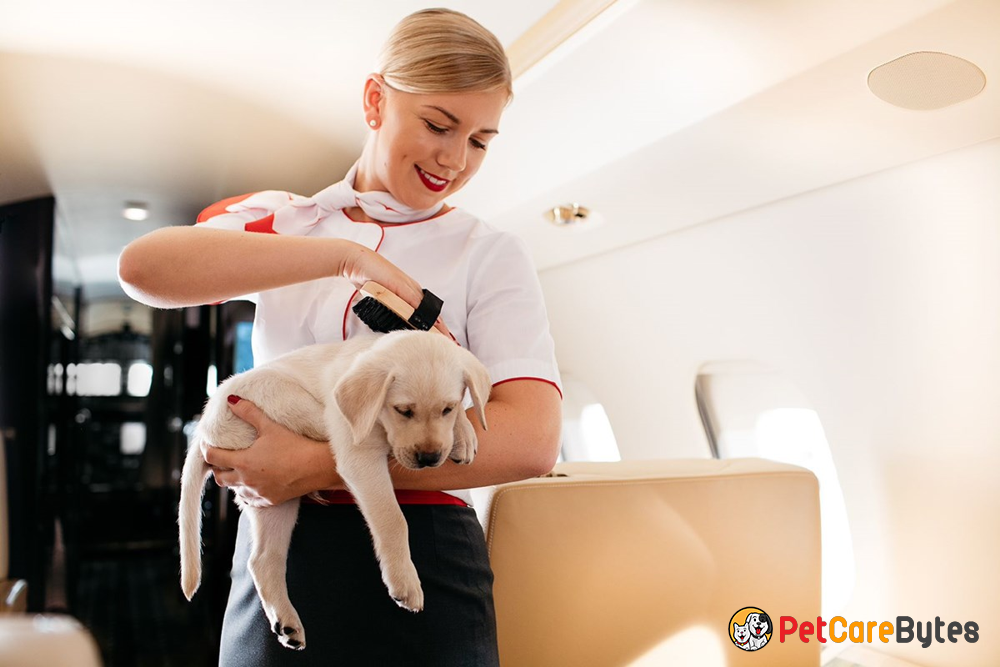In a world where pets are considered cherished family members, their health and well-being are of paramount importance. Pet owners go to great lengths to ensure that their furry companions lead healthy and happy lives. One crucial aspect of responsible pet ownership that has gained prominence in recent years is pet insurance. This article will delve into the significance of pet insurance in providing financial security for pet health care.
Read More: Pet Insurance: All the Stats, Facts, and Data You’ll Ever Need to Know
Contents
The Role of Pet Insurance
Pets bring immeasurable joy and companionship to our lives, but they also come with responsibilities, including healthcare. The Role of Pet Insurance in providing financial security for pet health care cannot be overstated. In this comprehensive guide, we will explore the world of pet insurance, its benefits, how to choose the right policy, and address common misconceptions. We’ll also hear real-life stories of how pet insurance made a difference in the lives of pet owners. Let’s embark on this journey to understand why pet insurance is becoming increasingly indispensable.
Understanding Pet Insurance

What Is Pet Insurance?
Pet insurance is a financial safety net designed to cover unexpected veterinary expenses. It operates on a reimbursement basis, where pet owners pay for veterinary services upfront and then file a claim with their insurance provider to receive a portion of the expenses back. This system ensures that pet owners can access quality healthcare for their pets without worrying about the cost.
How Does Pet Insurance Work?
Pet insurance plans vary, but they typically cover illnesses, accidents, and sometimes routine care. Policyholders select a coverage level and deductible that suits their budget. When their pet requires medical attention, they pay the vet bills and then submit a claim to their insurance company. The insurer reviews the claim and reimburses the eligible expenses, minus the deductible.
Benefits of Pet Insurance
Financial Peace of Mind
One of the primary advantages of pet insurance is the peace of mind it provides. Pet owners can make healthcare decisions based on what’s best for their pet’s well-being, rather than being constrained by financial limitations. This financial security ensures pets receive timely and necessary care.
Comprehensive Coverage
Pet insurance plans often offer comprehensive coverage, including surgeries, hospitalizations, medications, and diagnostic tests. Some policies also cover alternative therapies like acupuncture or chiropractic care. This wide-ranging coverage ensures that pets receive the best possible care when they need it.
Tailored Plans
Pet insurance providers recognize that every pet is unique. That’s why many insurers offer customizable plans. Pet owners can select coverage that suits their pet’s age, breed, and specific needs. This flexibility allows for personalized care and budget-friendly options.
Choosing the Right Pet Insurance

Coverage Options
When choosing pet insurance, consider the coverage options available. Some plans cover accidents and illnesses only, while others also include wellness care, dental procedures, or prescription medications. Evaluate your pet’s needs and choose a plan that provides comprehensive coverage.
Cost Considerations
Pet insurance premiums vary depending on factors such as your pet’s age, breed, and location. Assess your budget and select a plan with premiums you can comfortably afford. Keep in mind that while lower premiums may save you money initially, they may result in higher out-of-pocket expenses in the event of a claim.
Provider Reputation
Research the reputation of pet insurance providers. Read reviews, ask for recommendations from other pet owners, and assess the insurer’s customer service and claims process. A reputable provider ensures a smoother experience when you need to file a claim.
Common Misconceptions About Pet Insurance
It’s Too Expensive
One common misconception is that pet insurance is prohibitively expensive. While premiums vary, they are often more affordable than people expect. Consider the long-term financial benefits and peace of mind it offers.
Pre-Existing Conditions
Pet insurance typically does not cover pre-existing conditions. However, if you insure your pet when they are young and healthy, you can avoid this limitation. Pet insurance is about preparing for future uncertainties.
Limited Coverage
Some pet owners believe that pet insurance offers limited coverage. In reality, many policies provide extensive coverage, including chronic conditions and hereditary diseases. It’s crucial to select the right plan for your pet’s needs.
When to Get Pet Insurance

As a Puppy or Kitten
Getting pet insurance when your pet is young is a smart decision. Most policies do not cover pre-existing conditions, so insuring your pet early ensures they are protected from a young age.
After Acquiring an Adult Pet
If you adopt an adult pet without insurance, it’s not too late to get coverage. Pet insurance can still provide financial security for unexpected health issues that may arise in the future.
Older Pets
While pet insurance is most cost-effective for young pets, there are policies designed for older pets as well. These plans may have higher premiums, but they can still be valuable for covering senior pet health expenses.
Making a Claim
Understanding the Claims Process
Filing a pet insurance claim is straightforward. After your pet receives medical treatment, you submit a claim form along with invoices and medical records to your insurance provider. The insurer then assesses the claim and reimburses you for eligible expenses.
Required Documentation
Ensure you keep detailed records of your pet’s medical history and expenses. This documentation is vital when filing a claim. Promptly submit all required documents to expedite the reimbursement process.
Pet Insurance vs. Savings
Pros and Cons
Some pet owners wonder whether it’s better to save money for potential vet bills instead of buying insurance. While saving can be a prudent financial strategy, pet insurance offers immediate financial relief in emergencies. It’s a safeguard against unexpected, high-cost treatments.
Real-Life Stories
A Costly Accident
Meet Sarah, a pet owner whose dog, Max, had a severe accident. Max required surgery and extensive rehabilitation. Thanks to her pet insurance, Sarah received reimbursement for a significant portion of the medical expenses, allowing Max to recover fully.
Chronic Health Issues
Tom’s cat, Whiskers, developed a chronic health condition that required ongoing treatment. With pet insurance, Tom could afford the necessary medications and veterinary visits without straining his finances. Whiskers is now living a happy and healthy life.
The Future of Pet Insurance

As veterinary medicine advances, the role of pet insurance will become even more critical. New treatments and technologies may emerge, increasing the cost of pet healthcare. Pet insurance will continue to provide the financial security needed to give pets the best possible care.
Read More: 10 Best Mobile Apps for Pet Insurance
FAQs
- What does pet insurance typically cover? Pet insurance typically covers accidents, illnesses, surgeries, hospitalizations, medications, and sometimes wellness care. Coverage can vary among providers and policies.
- Can I get pet insurance for older pets? Yes, some insurers offer policies for older pets. However, premiums may be higher for senior pets.
- Is pet insurance worth the cost? Pet insurance can be worth the cost for many pet owners, as it provides financial security in case of unexpected health issues. Evaluate your pet’s needs and budget to make an informed decision.
- Can I use any veterinarian with pet insurance? Most pet insurance plans allow you to choose any licensed veterinarian. Check with your insurer for specific details.
- How do I compare different pet insurance plans? When comparing pet insurance plans, consider coverage options, cost, provider reputation, and customer reviews. Select a plan that aligns with your pet’s needs and your budget.
Conclusion
Pet insurance is a valuable tool that ensures pets receive the care they need when they need it. It offers financial peace of mind, comprehensive coverage, and the flexibility to tailor plans to your pet’s unique needs. By choosing the right policy, pet owners can provide the best possible healthcare for their furry family members.




















